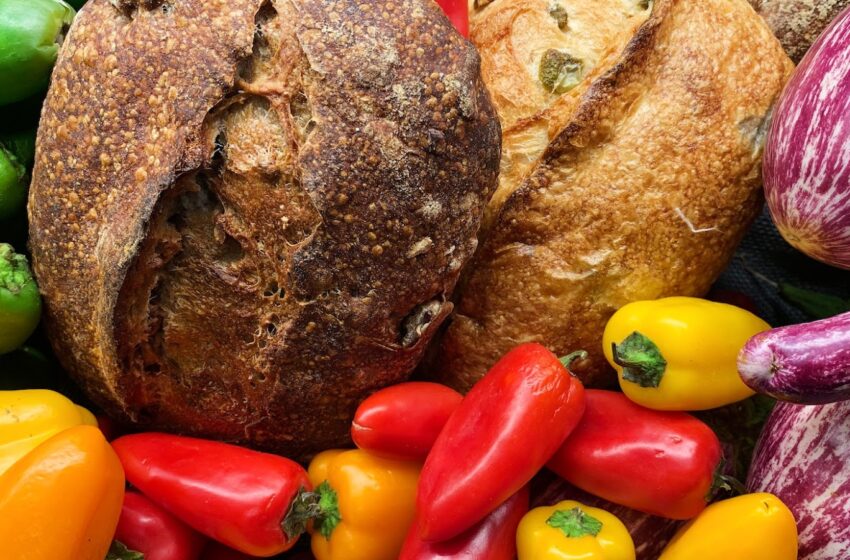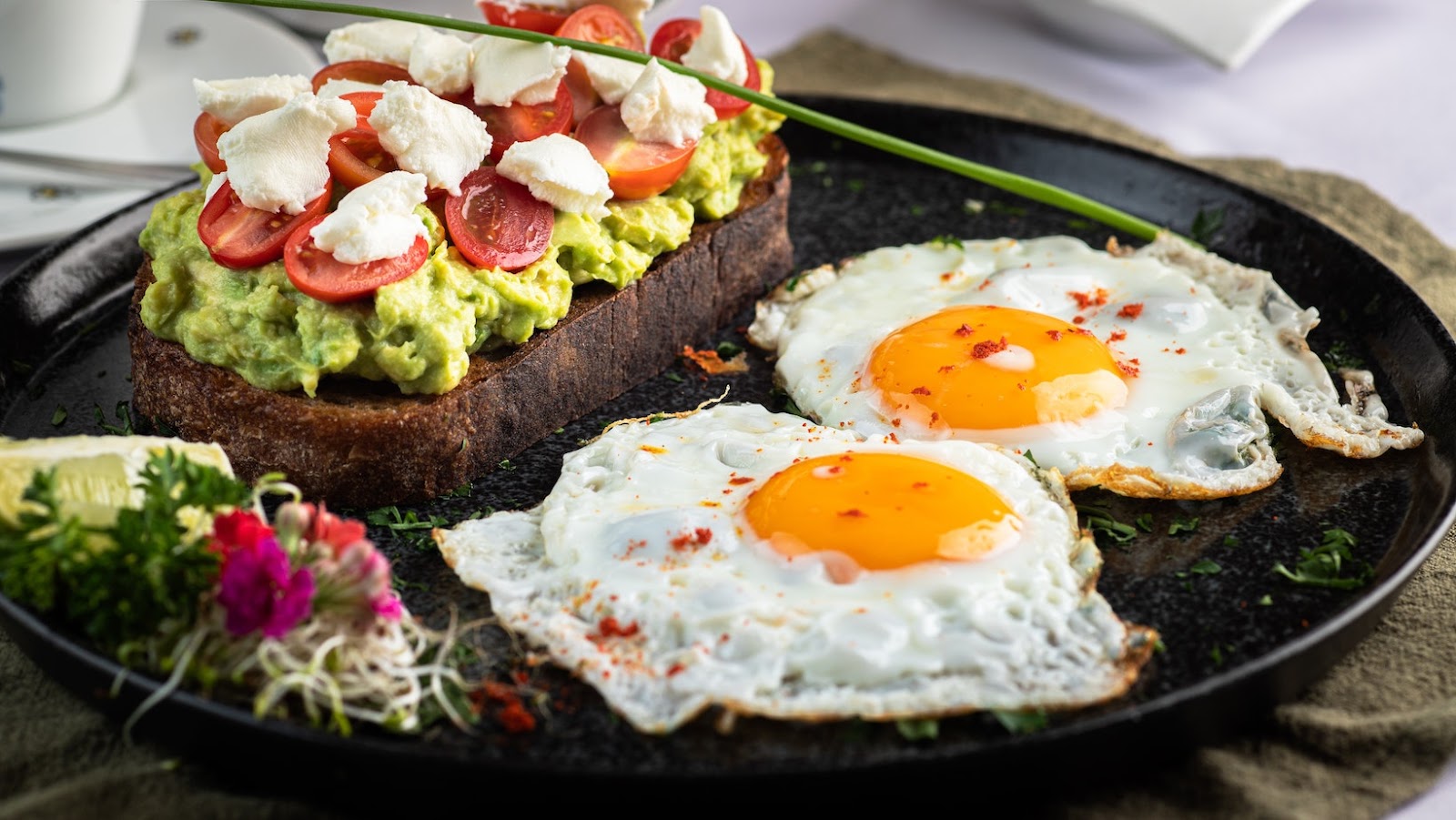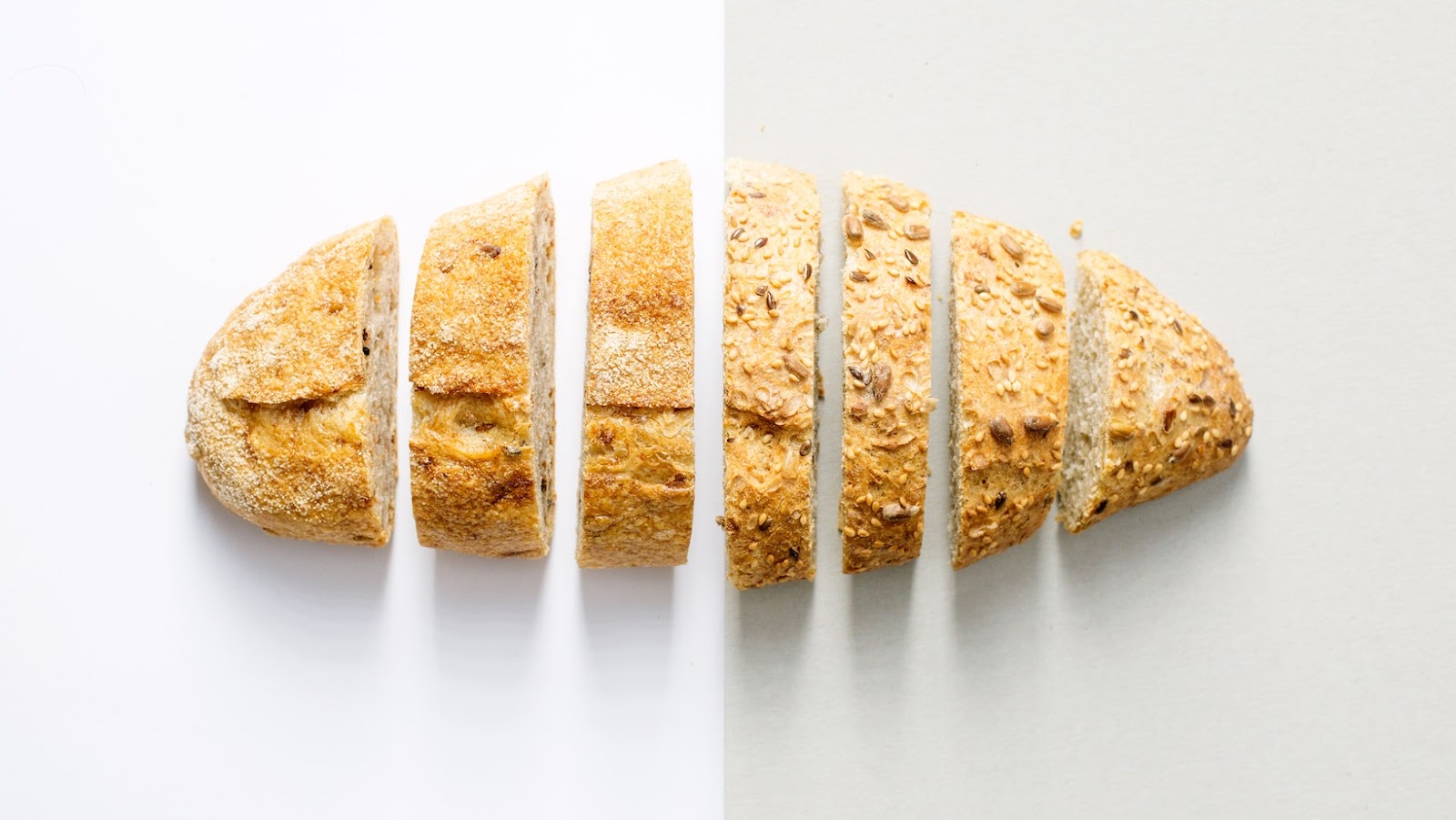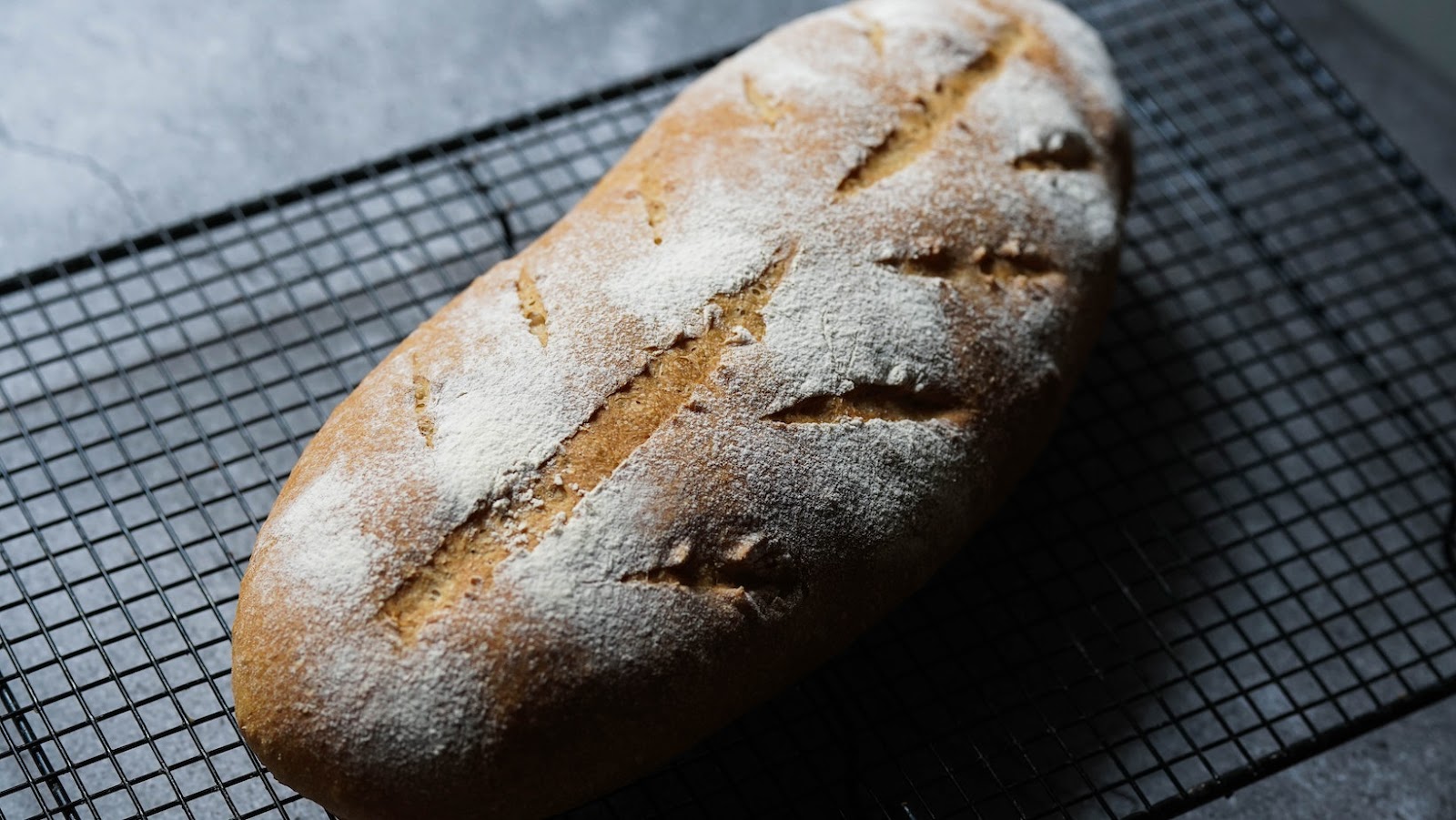
The Unique Flavor of Sourdough Bread
Understanding Sourdough Bread
Sourdough Bread – Uniquely Tempting Flavor!
Sourdough bread is made using starter dough, which is a mix of flour and water. This ferments naturally, allowing lactic acid bacteria and wild yeast to grow. When baked, the bacteria and yeast produce carbon dioxide, making the bread rise. This creates a sourdough flavor!
Unlike regular yeasted bread, sourdough has a tart, slightly acidic taste. It also has a chewy texture and a great crust, with complex aromas. These flavors depend on factors like fermentation temperature, flour type, and duration of fermentation.
Don’t miss out on the unique aroma, texture, and flavor of sourdough! Get ready for an unforgettable punch of tartness that’ll leave your taste buds overwhelmed. Try it and find out why it’s worth embracing the traditional method.
What Does Sourdough Bread Taste Like
To understand the unique flavor of sourdough bread, delve into its tangy and acidic taste, slight sweetness, and nutty and earthy undertones. Each of these sub-sections offers different elements that go into the overall flavor profile of sourdough bread.
Tangy And Acidic Flavor
Sourdough bread has a distinct flavor – tangy and acidic. Lactic acid produces this sourness, while acetic acid adds to the taste. It makes sourdough stand out from other breads.
Moreover, it has a longer shelf life than other breads. This is because the acidity keeps bacteria at bay. Also, the fermentation process creates beneficial bacteria and breaks down complex carbs, giving our bodies more nutrients.
Pro Tip: Want extra tangy sourdough? Try an older starter or let the dough ferment longer before baking. Miracles do happen!

Slight Sweetness
Sourdough bread has a special flavor, a mix of sweet and acidic notes. This sweetness is caused by lactobacillus bacteria breaking down the starches in flour into sugar. Also, lactic acid is produced, giving it a sour taste.
This bread is unique because of its sweetness. Described as complex and pleasant, it has a hint of sweetness which goes well with its tanginess. It has a crispy crust and a chewy inside.
Other than sweetness, sourdough bread has lots of other benefits. It has more nutrients due to long fermentation and a lower glycemic index, keeping you full for longer.
Sourdough bread has an ancient history. Around 5000 years ago it was developed in Egypt, and later in Europe during medieval times. Artisan bakers still use natural yeasts and flour blends to create delicious flavors. Enjoy the nuttiness and earthiness of a perfectly baked sourdough bread!
Nutty And Earthy Undertones
Sourdough bread is renowned for its complex flavor. Nutty and earthy undertones highlight the ingredients and fermentation process used. Yeast organisms consume starch, producing acids that create a unique taste.
A longer fermentation leads to tanginess and depth. This makes a more wholesome flavor than other breads. The nutty and earthy flavor comes from whole grains. Unique microflora in starter cultures may contribute to its distinct taste.
To boost the nutty and earthy flavors, use high-quality flour with plenty of whole grains. Add nuts or seeds to your dough for texture and nutrition. Allow time for fermentation before baking for maximum depth and complexity in taste. Even yeast has trust issues when it comes to sourdough bread flavor!
Factors Affecting Sourdough Bread Flavor
To understand how different factors affect the flavor of sourdough bread, delve into the section on factors affecting sourdough bread flavor with a focus on the fermentation time, temperature, and flour type. These sub-sections offer solutions to get a unique and delicious flavor for your sourdough bread.
Fermentation Time
Sourdough bread relies heavily on fermentation to give it its delicious flavor. The amount of time taken for this process has a huge impact on the final taste. Here’s a simplified guide to help you understand this:
- For shorter fermentation times, you’ll get a mild taste.
- Medium fermentation (12 – 16 hours) will give you a balanced, tangy flavor.
- Longer fermentations (>16 hours) will give you a sour, assertive flavor.
- Temperature affects the speed of fermentation, so managing it is key!
- Fermentation also impacts crumb texture – longer rises will result in bigger holes.
Using longer fermentation times also affects the loaf volume and consistency. High-gluten flour is recommended to get the best results. Science Direct research also suggests that prolonging fermentation increases serum propionate levels, which then influences the sensory characteristics.
In conclusion, controlling the fermentation time is important in creating the perfect sourdough – with varying durations giving you different tanginess and flavors, all the way up to propionate production. So who knew that the secret to yummy sourdough was just the right temperature and not a sprinkle of unicorn tears?!
Temperature
Optimal Dough Temperature for Sourdough Bread Flavor? Don’t miss out!
Dough temp is super important for both fermentation & final flavor of sourdough bread. A specific temp between 76-78°F produces delicious sourdough flavor. Why? Growth of lactic acid bacteria, yum! Higher temps = faster fermentation & less sour flavor. Lower temps = slower fermentation & denser loaves with milder taste.
Monitoring dough temp during mixing, bulk fermentation & proofing is key to consistent sourdough flavor. Keeping a close eye on this factor can help you create your signature sourdough recipe! It’s like finding the perfect partner – gotta have the right protein content, hydration needs & aroma.
Flour Type
Different flours offer unique qualities to impact sourdough bread. All-purpose flour is versatile, but may result in a less complex flavor than bread or whole wheat flour. Rye flour, however, contains more enzymes for a stronger sourdough flavor, but can make it denser.
A professional baker shared how experimenting with different flour types brought new flavors to their sourdough loaves. Using spelt flour made a unique nutty taste, and buckwheat flour an earthy flavor. The baker also found pre-fermenting with certain types enhanced the final product’s taste.
Comparing sourdough to other breads is like comparing a fine aged cheese to a slice of American singles.

Comparing Sourdough to Other Breads
To compare sourdough bread with other bread varieties, you’ll need to understand the differences in flavor and texture. This will give you a better idea of sourdough’s unique taste profile. In this section, we’ll explore the nuances between sourdough and other bread types. We’ll discuss the sub-sections of differences in flavor and differences in texture briefly to show the unique characteristics of sourdough.
Differences in Flavor
Sourdough bread is a special type of bread! It has a tangy and complex flavor that sets it apart. Here is a comparison of four types of bread – sourdough, French bread, white bread, and whole wheat bread.
Sourdough has a tangy flavor due to its long fermentation process. This process breaks down gluten and makes new flavors. Sourdough also has a chewy texture due to air pockets in the dense interior.
Fun fact: Sourdough is one of the oldest forms of leavened bread! It was so popular during the California gold rush that miners carried starter dough on their bodies!
Compared to other breads, sourdough is like a rebellious treat. It’s crusty on the outside and chewy on the inside – always breaking the rules of texture.
Differences in Texture
We explore the differences between sourdough and regular bread. To do so, we present a Table outlining their contrast in texture:
Bread Type | Crust Texture | Interior Texture | Crumb Structure |
Sourdough | Thick and Chewy | Chewy | Irregular |
Regular Bread | Thin and Soft | Soft | Regular |
Through sensory evaluation and scientific analysis, we observe that sourdough has a thicker crust, chewy interior, and an irregular crumb structure. On the other hand, regular bread has a thinner and softer crust. As well as traditional sourdough, you can use additional ingredients to create unique textures. For more flavor and texture, experiment with hydration levels and baking temperatures. Finally, add some rosemary for a touch of flair!
How to Enhance The Flavor of Sourdough Bread
To enhance the unique flavor of your sourdough bread, using high-quality ingredients, experimenting with different flours, and proper storage techniques can greatly improve the taste. By selecting the right ingredients, you can influence the sourness, texture, and flavor profile of your bread. Experimenting with various flours can add complexity and depth of flavor to your sourdough bread. Proper storage techniques can maintain the freshness, texture, and moisture content of your bread.
Using High-Quality Ingredients
Enhance the flavor of your sourdough bread with premium-quality ingredients! Opt for organic flour, sea salt, and water free from chlorine or chemicals. For optimal taste, incorporate fresh, locally-sourced add-ins.
For optimal flavor, give the dough enough time to ferment. High-quality ingredients have been a tradition for generations of bakers. Past bakers used these techniques to perfect their recipes and flavors, leading to today’s artisanal bread-making. Be adventurous and switch up your flours to make your sourdough unique!
Experimenting With Different Flours
Experimenting with different types of flours can make sourdough bread taste amazing! A Semantic NLP variation is perfect for exploring various flour options and their impact on the flavor.
See the table below to learn how each type of flour enhances the flavor profile of sourdough bread:
Type of Flour | Flavor Profile | Impact on Sourdough Bread |
Buckwheat Flour | Nutty, earthy tones | Adds complexity and depth. |
Rye Flour | Slightly sweet, with subtle hints of tanginess | Gives a distinctive tangy taste. |
Millet Flour | Mildly sweet with a hint of nuttiness | Adds a gentle sweetness and body. |
It’s not just about the type of flour you use, but also the proportion in which it is blended. Have an appropriate ratio while mixing different flour types. Or, opt for composite flours made from blending multiple grains.
To add depth to your sourdough bread flavor, try malt extracts or caramelized sugar syrups. These ingredients can amplify browning reactions in the dough’s crust during baking, giving unique, complex flavors. Another tip – age the sourdough starter. This provides an enhanced depth of flavor and complexity to your sourdough bread.
Storing sourdough bread? Keep it secret, keep it safe! Cool, dark places are the best.

Proper Storage Techniques
Retaining the Taste of Sourdough Bread is important. Avoid direct sunlight and moisture, for it can affect its texture and freshness. Store it at room temperature for 2 days. Wrap it in airtight plastic and refrigerate it for 4-5 days. Freeze it in a freezer bag for up to 3 months, but wrap it in plastic first. Slice it before freezing to ease up on wastage. Keep away from smelly foods as sourdough absorbs odors quickly. Reheat by popping it in an oven or toaster to get its original texture back.
Whether you’re a sourdough fan or just a bread lover, you can keep its unique taste fresh with these simple tips. Enjoy!
Conclusion
Sourdough bread – beloved by foodies for centuries – offers a unique flavor. Tangy and slightly sour, it comes from natural yeast and bacteria used in fermentation. This also gives it a special aroma and dense texture. As an ancient bread-making technique, sourdough is favored for its complex taste and long shelf life.
Plus, it’s more nutritious than other breads! Beneficial bacteria aids digestion and gut health. Also, it’s full of vitamins and nutrients due to whole grain or rye flour.
For a unique experience, pair sourdough with cheese or charcuterie. Its acidity goes perfectly with the flavors of cheese or cured meats. For a crisp crust and soft inside when baking at home, use a dutch oven or preheated baking stone.
To sum up, sourdough may be an acquired taste – but it offers unique characteristics and nutrition. With the right pairings and tips, it can be a great tasting experience.
